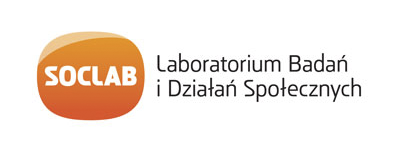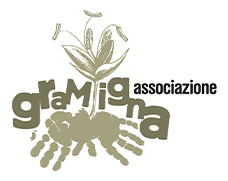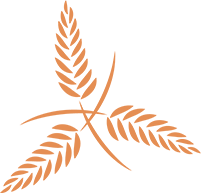EURECA
Good Practices
Conza Lake Oasis- WWF Area of Scientific Interest.
Country:Main Subject:
Description:
The World Wide Fund for Nature (WWF) was founded in 1961, with its main goal being the conservation of biodiversity and the promotion of sustainable practices to preserve the environment.
In Italy, WWF has been active since 1966, and the WWF Oasis System was established in 1967. Oases are a complex and articulated system of protected areas managed by a private association and among the first in Europe. They serve as places dedicated to the conservation of land and biodiversity, while also serving as areas to educate citizens about the values and importance of conservation. The organization works to conserve nature and promote sustainable development in the Italian context to protect the environment and safeguard biodiversity.
The WWF Oasis "Lake Conza" corresponds to Lake Conza, covering an area of 800 hectares and being one of the most relevant areas in the inland regions of the south from a naturalistic point of view. The lake is artificial, reaching a depth of 30 meters. Construction began in 1972, resulting in a dam that allows the accumulation of water from the Ofanto River for irrigation purposes. The dam has been operational since 1992, with a basin of 252 km² and a reservoir holding 63 million m³ of water. The reservoir serves multiple purposes, including irrigation and, since 2013, providing drinking water. The Ofanto River, originating between Nusco and Torella dei Lombardi and flowing into the Adriatic Sea, feeds the Conza della Campania Dam with its waters.
Designated as a WWF Oasis in 1999, the area holds national and international importance due to the variety of avifauna that nests or settles during long migrations between the African continent and Europe. Recognized as a Fauna Protection Oasis by the European Union, it is a Special Area of Conservation (SAC) and Special Protection Area (SPA), housing endangered animal species and natural habitats. As a Special Protection Zone, it serves as a refuge for many mammals facing a decline in their populations, such as badgers, foxes, and the now rare otters. The area hosts the most significant heron colony in southern Italy. The WWF Oasis of Lake Conza is a crucial crossroads for migrations, witnessing the passage of various birds during spring and fall, including cranes, birds of prey, storks, and ducks.
The area's flora includes numerous plant species that have colonized different environments over time. Some, considered "weeds," play a vital role in biodiversity protection. The avifauna is rich, with approximately 140 reported species, including breeding and migratory species. Fishing is allowed throughout the year with a government license, but access to the dam is restricted.
Managed by Dr. Marcello Giannotti, the Oasis conducts workshops and initiatives such as "Tradizional-Mente" (Tradition-of-Mind) focusing on biodiversity protection and traditional farming practices. The Oasis also offers guided tours, environmental education workshops for schools, and various programs like the wildlife area for ducks and canoe tours of the lake.
The Oasis is accessible to everyone, featuring two trails: the Nature Trail, a nature walk with an artificial pond, and a viewpoint with educational purposes, representing a vital habitat for wetland species. The White Stork Trail leads to wildlife areas and the ancient orchard containing six apple varieties typical of the area.
WWF's commitment aims to increase activities in the Oases, improve their usability (including virtual aspects), organize and participate in conferences and public events, produce observations and documents on projects, participate in committees and councils, carry out events and dissemination campaigns, make reports on environmental offenses, and provide adult training in environmental education.
In summary, the WWF Oasis of Lake Conza serves as a vital conservation area with diverse flora and fauna, contributing to environmental education and sustainable practices in Italy.
Reference links:
Email: lagoconza@wwf.it
Website: https://oasiwwflagodiconza.org/
Facebook: www.facebook.com/oasiwwflagodiconza
Instagram: @lagodiconza
Facebook: Centro di Educazione Ambientale
- http://www.comune.conzadellacampania.av.it/
- https://infoirpinia.it/oasi-wwf-lago-di-conza-una-meraviglia-naturalistica-che-torna-a-vivere/
- https://www.pescareonline.it/blog/p/diga_di_conza_della_campania.htm
- https://sistemairpinia.provincia.avellino.it/index.php/it/luoghi/oasi-wwf-lago-di-conza
- https://www.viaggioinirpinia.it/lago-di-conza/
- https://www.viaggioinirpinia.it/il-borgo-di-pietra-e-loasi-wwf-lago-di-conza/
- https://www.viaggioinirpinia.it/oasi-wwf-lago-di-conza-tra-aironi-e-lontre/
- https://www.meravigliosacampania.it/news/oasi-wwf-lago-di-conza-lincantevole-lago-nascosto-della-campania/
- https://www.impresadiretta.net/atripalda/categories/20-video/219-le-bellezze-dell-irpinia-oasi-wwf-lago-di-conza.html
- https://www.wwf.it/chi-siamo/presenza-sul-territorio/organizzazioni-locali/wwf-silentum/
SDG direct/ indirect short justification:
DIRECT SDGs:
- Clean water and Sanitation (SDG 6): the dam and the flow of water also intended for personal consumption because drinking and purified contribute directly to SDG 6 by providing a sustainable source of clean water, particularly in the rural areas surrounding the dam
Indirect SDGs:
- Good health and well-being (SDG 3): the management of the oasis park contributes to offering a healthy place in harmony with nature, aligning with SDG 3.
- Industry, innovation and Infrastructure (SDG 9): The irrigation water management system contributes substantially to local agriculture .
- Sustainable Cities and Communities (SDG 11): The oasis promotes the sustainable use of water, supporting the development of sustainable communities, with a training center for adults.
- Responsible Consumption and Production (SDG 12): The training center creates numerous meeting moments in which it encourages responsible water consumption practices.
- Climate Action (SDG 13): The oasis protects local fauna and flora and creates a protected environment for numerous species of insects, reptiles, birds and wild animals.
- Life beloaterater (SDG 14): the oasis protects local fauna and flora and creates a protected environment for numerous species of fish and aquatic plants.
- Life on land (SDG 15): the oasis protects and manages terrestrial ecosystems by supporting conservation.
Keywords:
City:
Location:
Questions:
- What are the main objectives and functions of the WWF Oasis of Lake Conza, and how does it contribute to biodiversity conservation in Italy?
- How did Lake Conza come into existence, and what role does the dam play in the conservation efforts of the Oasis?
- What makes the WWF Oasis of Lake Conza significant at both national and international levels, particularly in terms of its Fauna Protection Oasis designation and its role as a Special Area of Conservation and Special Protection Area?
- What are some of the activities and initiatives conducted by the Oasis, and how do they contribute to environmental education and sustainable practices, as mentioned in the article?
Authors:
Agostino Cefalo for Gramigna ODV
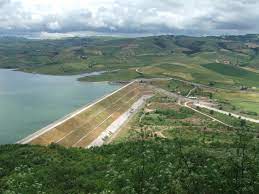

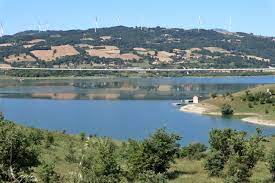 Pictures:
Pictures: